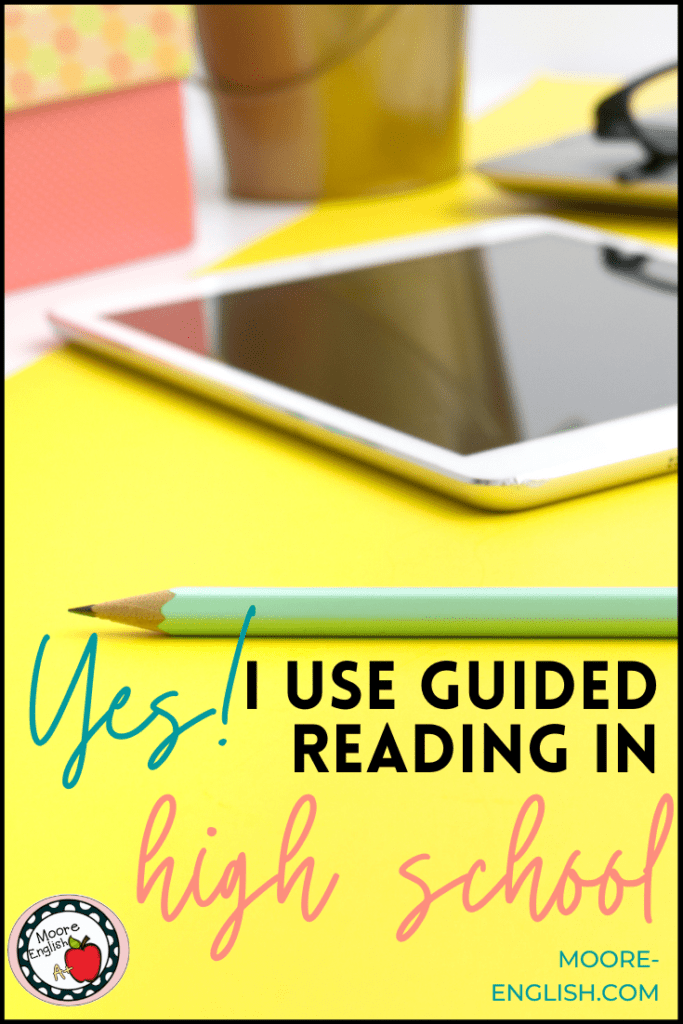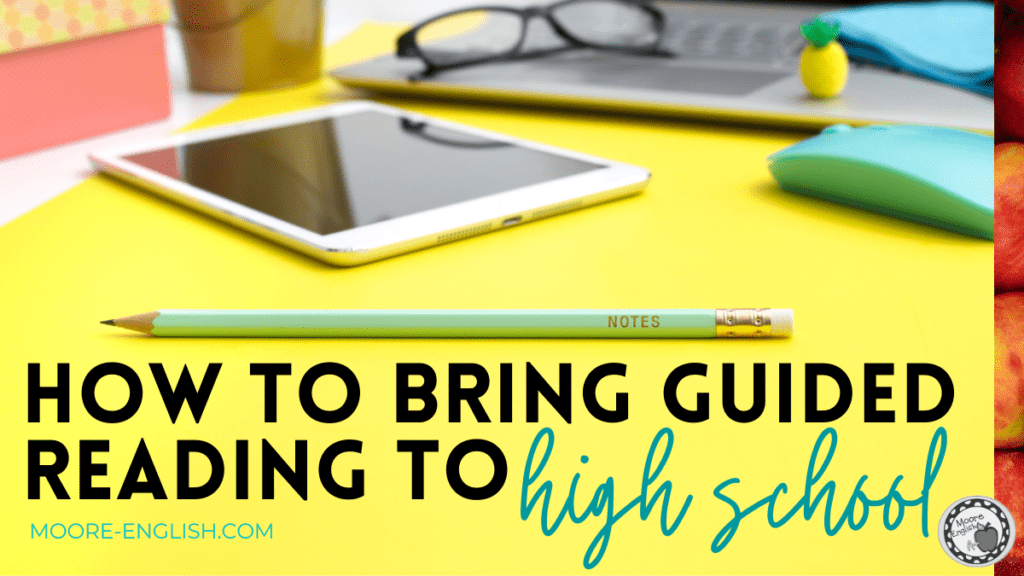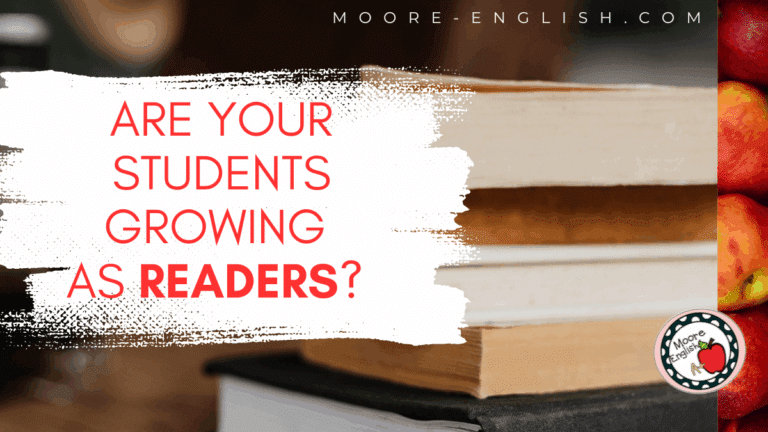Guided reading is not a teaching strategy we often associate with high school (there’s so much secondary teachers can learn from our elementary peers). After all, the goal of guided reading is to scaffold students to a place of independent proficiency. However, in high school, we continually introduce students to increasingly complex literature. Here’s a run-down of some of heavily anthologized pieces in high school, none of which is simple.
- The Odyssey by Homer
- “Song of Myself” by Walt Whitman
- “Winter Dreams” by F. Scott Fitzgerald
- Romeo and Juliet by William Shakespeare
- “The Yellow Wall-paper” by Charlotte Perkins Gilman
- “Nature” and “Self-Reliance” by Ralph Waldo Emerson
- “Sinners in the Hands of an Angry God” by Jonathan Edwards
- “Thanatopsis” and “To a Waterfowl” by William Cullen Bryant
Asking students to approach any of these texts cold is going to frustrate everyone. Obviously, the goal is for students to arrive at a place where they can independently approach any text. But students are not going to magically arrive at this place; instead, we have to teach students how to approach complex texts. That’s where guided reading comes in!
This post this post may contain affiliate links. Please read the Terms of Use.
Choosing Texts for Guided Reading
Employing guided reading requires an instructional spiral, moving students gradually to longer and more complex or nuanced texts. This is where lesson planning and intentionally choosing texts becomes so important. Here’s an example instructional spiral from my short stories unit:
- Start with “Girl” by Jamaica Kincaid. While the structure may be tricky, the text itself is short enough for one sitting. There’s not a lot of plot, and the tone is not complicated by irony or ambiguity.
- Level up with “A Worn Path” by Eudora Welty. This text is still short enough to read in one class period. The plot is simple enough for quick reading comprehension, but the conclusion is famously open to interpretation.
- Continuing increasing the rigor by choosing a text with a more complicated structure. For example, the stream of consciousness in “The Jilting of Granny Weatherall” complicates the text without adding too much length.
It’s also worth noting that guided reading works best with texts that can be read in one sitting. If a text gets too long, the strategy loses some of its efficacy. This short story cycle has served me well over the years. You can get my resources for these three texts plus more in my 9-12 Short Stories Bundle.
Implementing Guided Reading
I most-recently employed the guided reading strategy with my sophomores. We were reading and annotating poetry in preparation for making the move to synthesis-level thinking and writing. Here are the steps involved in the process:
- First, we use these four steps to pre-read EVERY poem. At this point, my students can pretty well do these steps without prompting. Check out my anchor charts and book marks for this strategy.
- Then, I explain to students that we are going to read the text straight through. As I read, I ask students to mark their initial thoughts and impressions.
- Next, I give students 2 minutes to pair-share some of their initial annotations with a neighbor. Then, I project a copy on the board with my document camera (one of the 10 gifts for any teacher), and students share their initial annotations with the class. These first annotations are usually fairly basic, but these are the foundations for more sophisticated annotations later on.
- Then, I read the text aloud a second time, more slowly. On this reading, we stop at the end of each paragraph or stanza to give students a chance to annotate that section. I tell students they need to add at least one new insight to each stanza or paragraph.
- Next, students pair-share, focusing on the 2-3 annotations they find the most interesting or challenging. At the end of the pair-share period, I ask students to star or circle the annotation about which they are the most proud.
- As a class, we add annotations to the text projected on the board. We work in sections, stanzas, or paragraphs. This helps us slow down and collect as much information as we can from our annotations.
- If we have time, I read the poem aloud a third time, asking students to end with a main idea or theme statement. If we are pressed for time, we do this as a class.
Moving Forward
Throughout the year, I return to the guided reading strategy several times. As we draw closer to state testing, we move away from guided reading in favor of independent practice. However, at this point in the year, students are ready for the increased challenge and rigor. How do you incorporate guided reading in your classroom?


Pictures from Ivory Mix.

















